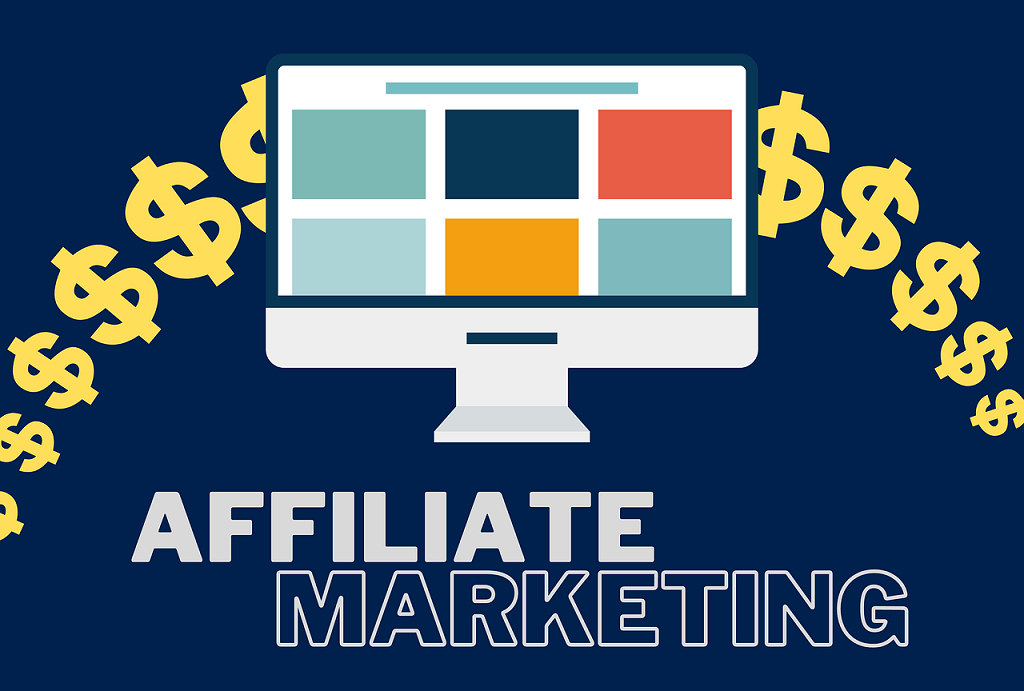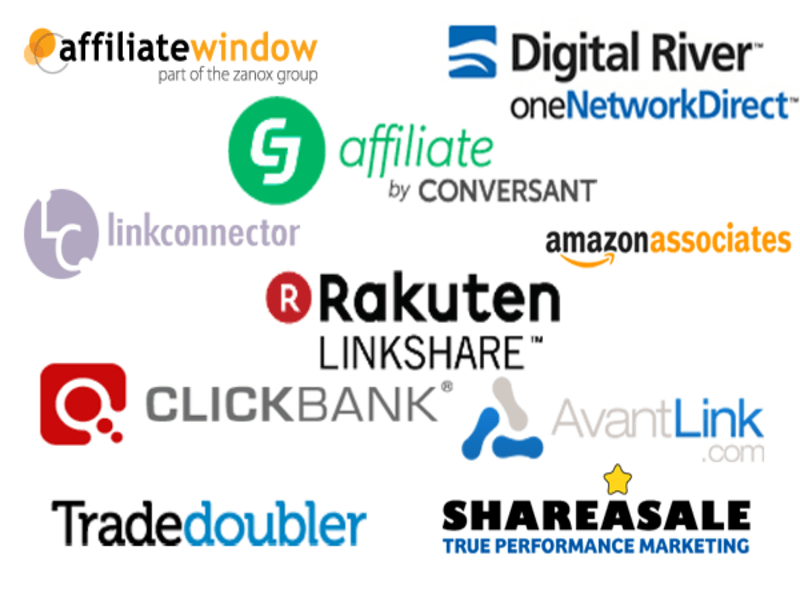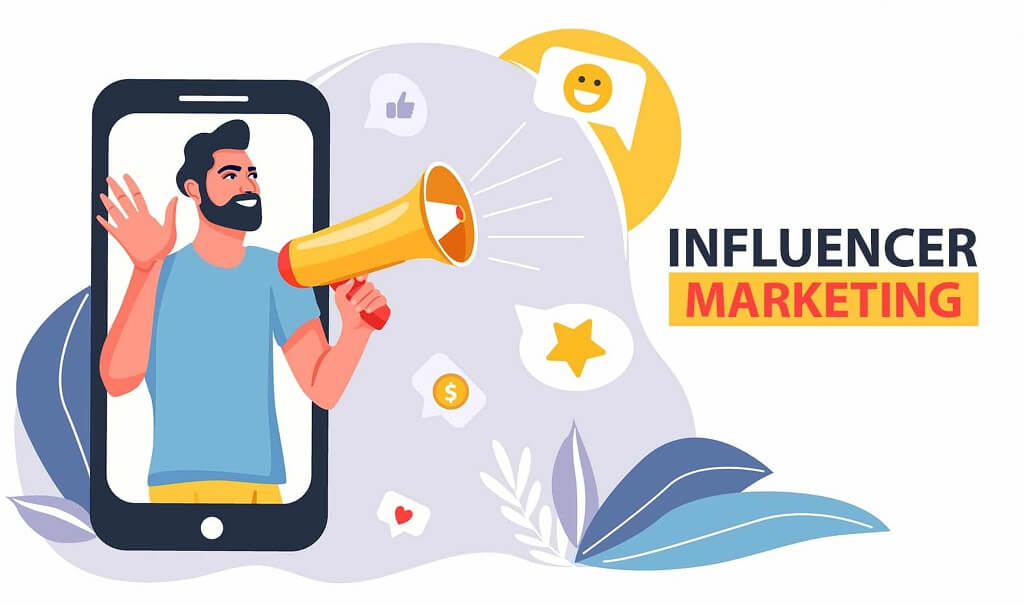Affiliate marketing is an excellent strategy to monetize your website traffic and earn extra money. It’s a versatile income stream that you can use no matter your industry or niche. In this comprehensive guide to affiliate marketing, I’ll show you exactly how to start affiliate marketing, grow your affiliate marketing business, and share some tips to take your affiliate marketing business to the next level.
You’ve probably heard people promote affiliate marketing by saying something like “make money while you sleep.” While this is a definite possibility, If I encouraged you to believe that affiliate marketing doesn’t need effort, I wouldn’t be doing my job.
Affiliate marketing is absolutely one of the best ways to generate passive (or almost passive) income online, but it’s not going to happen if you don’t approach it the right way. Luckily, this affiliate marketing guide has everything you need to start using affiliate marketing so you can wake up in the morning with a bigger bank account.

Table of Contents
What is affiliate marketing?
Affiliate marketing is the process of promoting and selling the products or services of another company in exchange for a commission. It’s a simple concept, but the process itself can involve many moving parts. However, at its core, affiliate marketing is simply selling someone else’s stuff and making money off of it.
How Does Affiliate Marketing Work?
I mentioned earlier that affiliate marketing is a simple concept, but there are a few moving parts to understand. In affiliate marketing, there is a seller who creates an affiliate program and provides affiliate marketers with a unique link, which the affiliates then use to promote the seller’s products. The links are unique to each affiliate marketer, making it easy to track who made the sale.
When someone clicks on the affiliate link, a cookie is stored on their browser. The cookie tells the seller who sold the product and lets the affiliate earn a commission even if the person who clicks the link decides not to buy right away. Cookies have an expiry date. So in order to receive credit for a sale, the consumer must make a purchase before the cookie expires.
Let’s say you clicked on an affiliate link with a 30-day cookie but decided not to buy the product. A few days later you go back and make a purchase. The affiliate marketer receives credit for your purchase because it was made within the 30-day window from when the cookie was saved.

Who are the players in affiliate marketing?
There are three or four main players in affiliate marketing:
- Affiliates: the people promoting the product
- Sellers: the people who created or sell the product
- Networks: networks that manage the affiliates (optional)
- Consumers: End-user of the product
Let’s look at each of these players in more detail.
Affiliates
Affiliates, sometimes called publishers, can be individuals or companies. In most cases, affiliates are content creators in the same niche of the product they are promoting. They promote products and services through content such as social media posts, blogs, videos, and a range of other types of content. Affiliates can also use paid ads to generate traffic, but there are usually rules on the keywords affiliates can use for the products they are promoting, such as: Not using the brand name or trade names of the products.
Sellers
Sellers are the creators of the products or services promoted by affiliates. They are the ones paying affiliate commissions on sales. Sellers can be individuals or businesses – anyone willing and able to pay affiliates for sales. Sometimes, as in the case of the Amazon affiliate program, the seller may not even be the creator of the product or service.
Affiliate Networks (optional)
Many sellers choose to work with an affiliate network to manage their affiliate marketing programs. The network conducts third-party audits and manages vendor-partner relationships. Some of the best affiliate marketing networks are ShareASale, ClickBank, and Rakuten.
Consumers
Consumers are those who buy products and services through affiliate links.

How Are Affiliate Marketers Get Paid?
This is one of the most common questions I get when it comes to affiliate marketing. In general, affiliates get paid when a consumer completes an action such as submitting a form, clicking or making a sale.
Per sale
The most common affiliate marketing model is pay per sale. With this payment model, affiliates are paid for every sale they generate.
Per click
With the pay-per-click affiliate marketing payment model, affiliates are paid for clicks generated, regardless of whether a sale is completed or not. This model is quite rare.
Per lead
With the pay-per-lead model, affiliate marketers get paid for the leads they generate.
Common Channels used in Affiliate Marketing
Affiliate marketers can generate traffic and make sales in a variety of ways. Some affiliate marketing channels are more popular than others, of course. Here are some of our favorite marketing channels to be successful with affiliate marketing.
Blogging
Blogging helps affiliates rank in search engine results and can organically (aka “free”) drive traffic to affiliate listings. Typically, bloggers use reviews, tutorials, guides, and other educational content to promote the affiliate product. They then link to the seller’s website using their unique affiliate link to receive credit for the sale.
Influencer Marketing
Influencers are people who have a major impact on the people in their sphere of influence, typically on social media platforms like Instagram, YouTube, and Facebook. People follow influencers because they are interested in what the influencer has to say and are already prepared to try anything the influencer might promote.
Influencer marketing for affiliate sales can take many different forms, such as live videos, product reviews, account takeovers, and more.
Paid search microsites
Microsites are branded pages (or a single page) that exist independently from your main site. These websites provide another way for you to provide detailed information and a selling point for affiliate products. Because they’re separate from your main website, you can offer a more targeted, relevant message that’s free from the distractions that usually come with a traditional website.
Email marketing
For good reason, email marketing has been around for a long time. The ROI of email marketing is high. Like, really high. Depending on which study you read, the numbers range from 3500% to 4400% returns. That means you have the potential to make $35-$44 in revenue for every $1 you invest in email marketing.
For affiliate marketers, your email list can be a great source of potential affiliate sales. While you don’t want to sell, sell, sell with every single email you send, there’s nothing wrong with sending one promotional email for every three valuable emails you send. You can add your affiliate links to your email newsletters and monitor affiliate sales.
Coupon Sites
Coupon sites have become increasingly popular in affiliate marketing as e-commerce and online shopping gain momentum. Posting your affiliate links on coupon websites can bring in lots of sales from the savvy buyers out there.
Mass media sites
Mass media sites or big media sites are created to generate tons of traffic. On these sites, you will find reviews and comparisons of various products, many of which are affiliate products. These websites act as a social proof repository for the products and services on them. They tend to promote products via banners and contextual affiliate links.
Benefits of Affiliate Marketing
Now that you know more about affiliate marketing, you might have noticed that it’s not exactly something you just turn on and it works. Affiliate marketing takes effort to get off the ground. You spend time creating content, driving traffic to your landing pages or microsites, and promoting products on social media. The good news is that affiliate marketing offers several benefits. Let’s explore these benefits now.
(Almost) passive income

Content creation and promotion aside, you can make money from affiliate marketing any time of the day or night, making it a near-passive income option. And you don’t have to be an active participant in the transaction to make it happen. When you have a system in place to keep things running, you have the potential for a large return with very little ongoing overhead.
Flexibility
Affiliate marketing gives you incredible flexibility to do whatever you want and still generate revenue for your business. You don’t have to design, manufacture, store, ship, or support the product—you just sell it. That means you don’t have set hours in which to create or promote the product. You simply select products that you like and think your audience will like, create the content to promote those products, and then do the actual promotion.
Cost-efficient
If you’ve always wanted to start your own business, especially one that sells physical products, you know it takes money to get started. Sometimes a lot of money. Affiliate marketing is an inexpensive way to start your own business. As an affiliate marketer, all you have to think about is the time you invest in creating and promoting content.
Low risk
Continuing with the previous benefits of affiliate marketing, affiliate marketing is also low-risk. As an affiliate, you don’t have to invest any money to create, produce or store products. Your sole responsibility is to market and promote the products to your followers as well as paid traffic (if you choose to go that route). Even if you decide to promote affiliate products through blogging, you’re not going to spend a ton of money on something that you’ll leave out if it doesn’t work. There are tons of affiliate products and services that you can promote. If one is a dud, just move on to the next.
No customer support
You don’t have to worry about customer service for the products and services you sell as an affiliate marketer. This is a huge relief for many affiliate marketers who want the freedom to start their own business without having to think about how to engage with actual customers. The only thing I want to emphasize here is that the products you promote to your followers should be quality products or services that they would actually use. If you push bad products on your audience just to make a quick buck, they will stop trusting you. So, be selective about the affiliate products and services you promote.
How to get started with affiliate marketing?
A quick Google search for “affiliate marketing” returns about 678 million hits. Even if you narrow this down to how to start affiliate marketing, you’ll still find 88.5 million results. That’s a lot of content to dig through, especially since most of it is outdated and a lot of what isn’t is starting mid-process. I am going to start this affiliate marketing guide from the beginning so you can get started even if you don’t yet know what a “cookie lifespan” is or why it’s important (don’t worry, I’ll tell you). Let’s dive in.

Step 1. Find a niche

The very first step to getting started with affiliate marketing is choosing a niche. This niche is what you will “fill” your store with. And I don’t want a convenience store vibe here. You want to be known for something as an affiliate marketer.
That doesn’t mean you’re only promoting a single product or service like golf balls. Instead, it means you potentially become a partner to the broader golf niche. Within this niche you could promote:
- Golf equipment such as bars, clubs, and clothing
- Online learning and books
- Golf courses themselves, promotion of memberships and day passes
- Professional golf material such as tournaments, golf history, memorabilia
You got the idea right? Here are some of the industries you might want to explore:
- Hobbies such as photography, traveling, sports betting
- Financial products such as debt settlement, investments, credit cards
- Wellness topics such as yoga, nutrition, organic products
- Lifestyle products such as fashion, luxury items, online dating
- Home and family issues including home safety, baby products, gardening
- Technical things like SaaS, web hosting, VPN
- Alternative products such as CBD, essential oils, personal development
what are you burning for What do you buy yourself? This is a great place to start!
Step 2. Select a channel
After choosing your niche, you should choose at least one platform or channel that you will use for affiliate marketing. As I mentioned earlier, blogging is probably the easiest and cheapest way to get started with affiliate marketing and can work for affiliates who want to write product reviews and comparisons to promote their chosen affiliate products.
YouTube is another great platform for affiliate marketing. Also, it’s free to start a YouTube channel and upload videos. The downside is that there are tons of other videos and creators on YouTube, so it can be difficult to draw attention to your products.
Also, it will likely take a lot more time to create and upload a great video than just writing a blog post. YouTube is definitely something to consider if you want to be in front of the camera and talk to people. And if you already have a following on YouTube, by all means, use it for successful affiliate marketing.
Instagram is another place where you can find many affiliate marketing promotions. It’s a really active platform, and if you already have a following on it, it’s a fantastic choice, just like YouTube. You can create visually appealing images and videos to promote your affiliate products and like other platforms, even pay for ads if you want.
Regardless of which platform you choose, make it clear when you share a promotion. I recommend adding an affiliate link disclaimer to all your links. So on your blog, you would link to your affiliate product and then add “affiliate link” in brackets. On YouTube, include the affiliate link disclaimer in your video description.
Step 3. Choose the products you’d like to promote.

Now that you’ve decided on a niche and where you want to promote your affiliate products, it’s time to choose the affiliate products you want to promote. Select products with your target audience in mind and make sure you offer quality products that they will actually benefit from using.
To know you’re on the right track, ask yourself if the products you’re considering are improving the lives of the people you’re offering them to. Is it something you would buy or would you tell your grandma to buy it? If the product or service passes both of these tests, you should make sure that it offers you a real opportunity to monetize the promotion. What are conversions and payouts for the product?
If you can’t think of anything or you just want to see what’s out there, you can go to your favorite search engine and search for “your niche partner” and go from there. Or…
Step 4. Join an affiliate network or affiliate program
If you have a website and are already creating content, you’re ahead of the pack. You can use your website analytics to find out who your target audience is so you can then find products that suit them while still giving you the payout you want. Joining an affiliate network or program gives you access to brands that are looking for affiliates, as well as tools to help you find the right options. Top affiliate networks include:
Affiliate networks give you access to hundreds if not thousands of affiliate programs to join.

How to choose the best affiliate programs?
A lot goes into choosing the best affiliate program for you. Here are some of the most important factors to consider when choosing the best affiliate programs for you and your audience.
Commission type and amount
If you want to make money from affiliate marketing, and I bet you do, the type of commission and amount you can earn is probably the most important factor for you. Flat and recurring commission models are the two most common commission structures.
For physical things, the flat model is more typical, and it requires a single, one-time flat payment per sale.
With the recurring model, which is more popular with subscription products, you get commissions every time the customer renews.
It’s also important to learn about the brand’s refund policy. Refunds are an inevitable part of shopping. But what happens if someone buys through your affiliate link and then requests a refund? It’s important to know if you’ll be charged for refunds.
Cookies Lifetime

And here I am, back to the cookie lifespan I mentioned earlier. When I talk about cookies on the Internet, I am referring to text files that contain small amounts of data. These cookies are used to identify your computer when you use a network. When considering affiliate marketing programs, you may want to know how long the cookie stays on the buyer’s device. This is important as a longer cookie life means you have a larger window for a buyer to come back and make a purchase that is credited to you (so you get the commission).
So if someone uses your affiliate link and the cookie lasts one day, the buyer must complete a purchase within 24 hours of accessing your affiliate link. If the cookie expires in 30 days, the shopper could make a purchase two weeks after first accessing your affiliate link and still get credit for the purchase. The longer a cookie period is the better.
Relevance
Your audience is critical to your success in most things. And that is definitely the case for affiliate marketing. Choose products that are relevant to your audience. Finding products that are relevant to your audience and have high payouts is even better. But don’t choose a product that isn’t right for your audience just because it has a high payout. Not only will you damage your audience’s trust in you, but you probably won’t make any sales either.
Payment method
How are you paid? Make sure you understand how often the affiliate program pays out, where you receive the money, and what currency it is paid in. If you sell products with a recurring commission model, when are these payments applied? Is there a certain threshold you have to meet to get paid (e.g. payouts only occur when there is a minimum of $50 in commissions)?
Promoting tools and conversion rates
Most of the time, brands offer creative elements like banners, graphics, and coupons that you can use to promote their products. These can be incredibly helpful resources. Other brands may only give you a text link. Check out the resources the brand provides. While getting a link to apply might not be a deal-breaker, the need to build these resources yourself from scratch needs to be factored into your costs.
It’s also important to find out what’s on the other end of the affiliate link. Is it a boring landing page full of grammatical errors? A brilliantly designed video sales page? A landing page that looks like a box with “SALE!” Stickers exploded everywhere? The design of the page at the other end of the affiliate link can make a big difference when it comes to your commissions. If the page isn’t built for conversions, it probably won’t get many.
Competition
Another important consideration when choosing affiliate programs is; competition. How many people are already selling the product? If the market seems overly saturated and the brand doesn’t seem big enough to support the urge for that many sales, it’s probably better to choose another option.
Step 5. Create quality content
You’ve chosen industry and platform, identified products to promote, and even joined an affiliate network. You’re good to go! But what now? It’s time for content creation.
The delivery of the content you create will depend on the platform or platforms you have chosen to promote your affiliate products, but there are some types of content you can rely on:
- Product Reviews: These are a staple of affiliate marketing and one of the easiest ways to get started. You can create your review in the form of an article or a video, depending on the affiliate marketing channel you use. In your product review, share what you love and don’t like about the product (honesty is key to making sure your audience trusts you).
- Case Studies: These take the product reviews one step further. Case studies allow you to tell a success story behind the product you are promoting. It’s basically a kind of “show” instead of “telling” advertising.
- Tutorials: How-to articles and videos are great for letting your audience know how you’ve used an affiliate product or made something cool with it. Tutorials are actionable content and prepare your audience for success.
- Product Comparisons: In a product comparison, you would compare your affiliate product to another product designed for the same purpose and then give your honest opinion. It’s entirely possible that the affiliate product isn’t the best in some use cases, even if it’s the best product overall. Being honest just shows your audience that they can rely on you.
- A resource page: These aren’t usually big sales drivers, but they can be a way to generate additional income through affiliate marketing. Plus, it’s super easy to create a page that includes all of the products you recommend and affiliate links for those products, so why not just do it?
Step 6. Generate traffic and build an audience

Once you’ve created some content, you can start generating traffic and building an audience that will click on your affiliate links. There are three specific strategies that I recommend.
Build an email list
I’ve already told you about the ROI of email marketing, so it shouldn’t come as a surprise that I encourage you to build an email list. Unlike your list of social media followers, your email marketing list is yours. So if your social network decides to stop allowing it for advertising purposes, you still have access to your email list and can use it whenever you want.
The quickest way to grow your email list is to offer a lead magnet (something users get in exchange for giving you their email address). This can be a checklist, a free course, or any number of things that your audience will find useful and valuable.
Once you have their information, you can send subscribers valuable content along with promotional emails. To get the most out of your email marketing, you should probably check out our picks for the best email marketing platforms that will simplify the whole process.
Search Engine Optimization
Search Engine Optimization (SEO) is important for getting organic traffic to your website. The idea is pretty simple: you target specific keywords that your audience is interested in, create content around those topics, and make sure your website gets indexed by Google, Bing, and other desired search engines.
Paid traffic
Once you start bringing in money, you can reinvest some of it into paid traffic. You simply create an ad (on a search engine or social media platform) and it pulls people to your website. While it’s not a guarantee that you’ll get affiliate sales, it’s still a great way to build traffic and potentially rank your site higher, allowing it to be found more often by people interested in what you’re offering.

Tips to improve your affiliate marketing
Now you know all the basics of getting started with affiliate marketing (as well as some less basic stuff). What’s next? You start of course! Here are some tips that will get you started and quickly improve your affiliate marketing efforts.
Start with product reviews
Start reviewing products and services in your industry. This will build trust with your audience and establish you as an expert in your niche. Be sure to tell your audience why they would benefit from (or steer clear of) the products you’re reviewing. Add product comparisons once you’ve completed a few product reviews.
Stay up to date
There is a lot of competition online and in affiliate marketing. To be the best, you need to keep up with trends, not just in your industry but in marketing in general. If you’re a social media master, you don’t want to be left behind when the next TikTok pops up.
Build trust with your audience
I’ve said it a number of times in this article: trusting your audience is paramount. Don’t betray that trust by releasing products they don’t want or need. Rather, concentrate on things that you actually believe would help your target market. And never tell them directly to buy – they recommend products based on your expert opinion. Be helpful and recommend quality to keep your audience coming back for more.
Diversify your affiliate products
You are not restricted in the affiliate products you promote. Even if you love a particular seller, it’s okay to partner with other sellers and promote other products as well. This also protects you as an affiliate, since you won’t be left out of the water if the seller you love decides to cut commissions, limit the ways you can reach your audience through products, or shut down their affiliate program altogether.
Test and optimize
Test and optimize everything. The whole time. Become familiar with your analytics and use those analytics to inform your marketing and advertising. In marketing, you never really know exactly how something is going to work until you do it. So let things run for a while to collect data and then start optimizing. Find what works better and do more of it.
Start Affiliate Marketing Today!
You now have everything you need to start affiliate marketing. If you wanted to, you could even get started today! With the training, tips, and step-by-step processes I’ve outlined here, I have no doubt that you can launch your affiliate marketer career in no time. So what are you waiting for? Getting started!
Frequently asked Questions
What is affiliate marketing?
Affiliate marketing is a performance-based marketing tactic in which a seller rewards people with a commission for each customer referred or product sold through that person’s promotional activities.
How do I make money with affiliate marketing?
Find products you want to sell and promote them with your affiliate link through a combination of channels like blogging, social media, and paid ads.
Who Can Become an Affiliate Marketing Program Seller?
Anyone! If you sell a product or service and have the opportunity to offer people commissions to promote you, you can start your own affiliate marketing program.
How do I know what’s popular?
There are several tools you can use to spot trends (like BuzzSumo ), but the best way is to get to know your audience. You can even ask them what products you would like to see or talk about and go from there.
How do I find products and companies to promote?
Joining an affiliate marketing network is the easiest way to find products and businesses to promote, but you can also search engines for “your niche + partners” to find other ideas.
How do I promote affiliate products?
You can promote affiliate products through product reviews, product comparisons, in your email newsletter, on your blog, paid ads, and more.
To Your Success!




